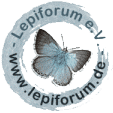

 +4Kontinente:EU
+4Kontinente:EU3. Weitere Informationen
3.1. Etymologie (Namenserklärung)
"The species name is derived from the name of the Sardinia Island where the species records have been most frequent" (Šumpich, J. 2012).
3.2. Typenserie
Šumpich (2012) informiert:
"Holotype. ♂, “Sardinia, Témpio 1200m, Mt. Limbara, 2.7.2004, J. Skyva lgt. (coll. J. Skyva; to be later stored in National Museum in Prague).
Paratypes. Italy, Sardinia. 1 ♀, the same locality and data as holotypus (coll. J. Skyva); 1 ♂, 1 ♀, Olbia, Le Saline, 5.V.2006, leg. J. Skyva (♂ coll. J. Skyva, ♀ coll. J. Šumpich); 2 ♂, Budoni, Brunella, 2.V.2010, leg. J. Skyva (coll. J. Skyva et J. Šumpich). – France, mainland. 3 ♀, Port la Nouvelle, 23.–24.V.1995, leg. J. Skyva (2 ♀ coll. J. Skyva, 1 ♀ coll. J. Šumpich). – France, Corsica. 1 ♂, St. Lucia di Porto Vechio, Tagliu Rossu, 19.VI.1993, leg. J. Liška (coll. J. Liška). – Spain. 1 ♀, Catalonia, Platja d’Aro, 24.–29.VII.2002, leg. J. Šumpich (coll. J. Šumpich)."
3.3. Faunistik
Locus typicus nach Šumpich (2012) und Fernández (2013: 356): Sardinien, Témpio, 1.200 m.
Verbreitung nach Šumpich (2012) und Fernández (2013: 356): Sardinien, Korsika, Festland-Frankreich (Département Aude, Port-la-Nouvelle) und Spanien (Katalonien, Platja d’Aro). Die meisten Nachweise stammen aus den Tieflagen unterhalb 250 m.
3.4. Literatur
- Fernández, J. (2013): Noticia de nuevos táxones para la ciencia en el ámbito íbero-balear y macaronésico. — Graellsia 69 (2): 327-363.
- Erstbeschreibung: Šumpich, J. (2012): Blastobasis sardinica sp. nov. – eine neue Art im Mittelmeerraum (Lepidoptera, Blastobasidae). — Entomologische Zeitschrift 122 (5): 229-232 [PDF auf entomologicalservice.com].






